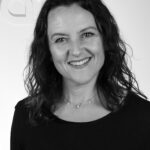Optimized Chilling Protocols for Fresh Fish
Guidelines for cooling fresh fish describe the most effective cooling methods at all stages of the cooling chain, with an emphasis on white fish. It describes how to best cool and maintain temperatures in order to maximize product quality and safety and reduce costs and energy consumption. The report contains background information for instructions in the information source Kæligátt on Matís' website, which is presented in a user-friendly way in Icelandic www.kaeligatt.is and English www.chillfish.net. The guidelines are intended for fishermen, manufacturers, carriers and other members of the value chain. The guidelines are based on research that has been carried out within research projects such as Chill ‐ on, Simulation of cooling processes and Cooling improvement. The main chapters deal with refrigeration on board, during processing, during packing, transport and storage of fish.
The overall aim of the optimized chilling protocols is to describe the most effective chilling methods for any stage in the food supply chain with emphasis on whitefish. This comprises optimization of the whole chain for lowering and maintaining low temperature with the aim of maximizing quality and safety of the products and minimizing costs and energy use. This report is the background for the protocols and guidelines published with open access at Matís website in Icelandic and English in a user ‐ friendly way: www.chillfish.net. These are protocols to follow aimed at the use of fishermen, manufacturers, transporters and other stakeholders in the fisheries chain. The information is divided into subchapters of different links in the chain. How to chill fish on ‐ board, during processing, packaging, transport and storage are the main chapters.





